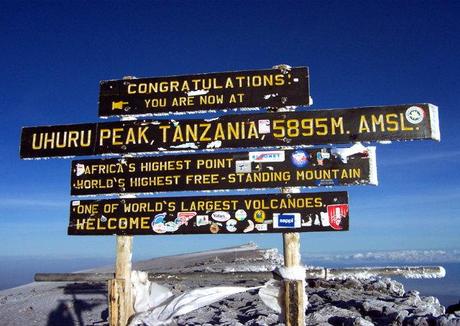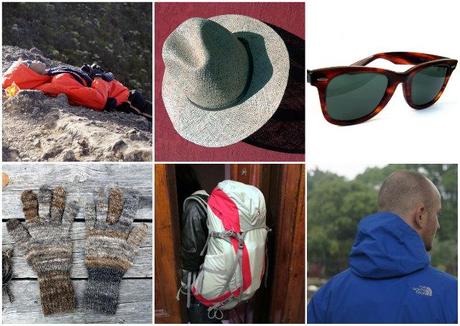Whilst thousands of people and ‘average tourists’ successfully climb Kilimanjaro every year, that doesn’t mean it’s not a serious undertaking. People often assume it’s not technically difficult. Whilst it does not require crampons and ropes and other specialised mountaineering gear that other mountains of such a height do, it’s still way above 5.000 meters so even at the camps and especially at the summit, which most people reach at dawn, temperatures drop well below freezing. Being well prepared in terms of equipment means that your overall experience will not only be more comfortable and enjoyable – and let’s face it when you’ve forked out a small fortune for the privilege you want to be able to you enjoy it as best as you can – but it will also increase your chances of acclimatising to the altitude and avoiding altitude sickness, which anyone and many can struggle with to lesser or greater extents. Finally, if you can and are willing to spare any of your equipment and clothing then consider donating it to the guides and porters at the end, or better still bring extras to donate. By the time you’ve felt the full force of the mountain yourself you’ll realize that most of the staff working to make your experience as luxurious as a mountain can get have to do it themselves with appallingly inadequate clothing.

The Killer Checklist
High altitude mountain hiking boots – not your average ones, but heavy duty for rain and snow, suitable to attach crampons (though you won’t need crampons), impermeable, gore-tex, high ankle protecion. They’re tough against all terrains and weathers and most of all will save your toes from freezing at the top. If you buy them new be sure to allow a few weeks to wear them in and do some hill walking to let your feet and leg muscles get used to them, they’ll feel like heavy moon boots if you’ve not had a pair before!
Waterproof jacket and trousers – even if it doesn’t rain, you’ll need them to protect you from the freeze-dry style wind at the top.
Fleeces – yes, two or three! In case one gets wet, but generally to be able to pile on layers as and when needed.
Thermals – get those sexy long johns on! These will keep you toasty at night in the higher altitudes and are a necessity for the summit.
Walking trousers/shorts – at least one pair of quick-drying light-weight trousers, the convertible ones if you want to have the option of shorts (whilst this is a long list still be as considerate as possible to the porters carrying your stuff and keep everything to a minimum).
Walking t-shirts – short and/or long sleeved, again, quick-drying light-weight.

Warm hat – for final summit day as well as sleeping above 3,000 meters.
Sun hat (or buy a ‘Kilimanjaro’ souvenir one from locals at the gate or in town) – you’re almost on the ecuator so the sun is strong, even though the mountain breeze might disguise it.
Thick and thin gloves – to wear separately as the climate changes through the different levels or together if you’re really suffering at the top. Unless you have bionic circulation, decent ski gloves or stronger (i.e. thick padded and with wind and/or water proof protection to withstand minus 15-20 celsius) are essential at the top.
Buff/scarf – need I repeat it again… keep warm! Something like a Buff or neck hanky has multi use as both sun protector and neck warmer.
Thick hiking socks – ideally sufficient for a new pair each day of your trek; they’re not pleasant or practical once they get wet and sweaty. Save the thickest for the last day.
Sun glasses – at the bottom the sun is tropical, at the top it reflects brightly off the snow. Make sure they’re comfortable and of a high standard to withstand snow reflection.
Sun block – you don’t want to be suffering from sun burn or sun stroke whilst also subjecting your body to high altitude acclimatisation!
Lip salve with SPF – if you want to prevent your lips falling off, especially important for the gale force freezing winds at the top,
Small flannel – great as both a mini towel and to wash with, as a minimum most companies provide a bowl of hot water each morning and evening to freshen up with, more luxurious and expensive operators provide full on showers. If you bring a towel make sure it’s small or travel-style quick drying.
Bottle(s) – strong and re-usable (not plastic) to carry up to 2 litres. You have to carry your own water for each day and keeping well hydrated is one of the most important things to acclimatise to the high altitude and avoid altitude sickness.
Toilet paper - not always provided, you don’t wanna be caught out!
Personal toiletries – but remember, you don’t get many chances for a full shower so it can be kept minimal.
Backpack 50-75 liter capacity – this will carry the bulk of your stuff, including sleeping bag
